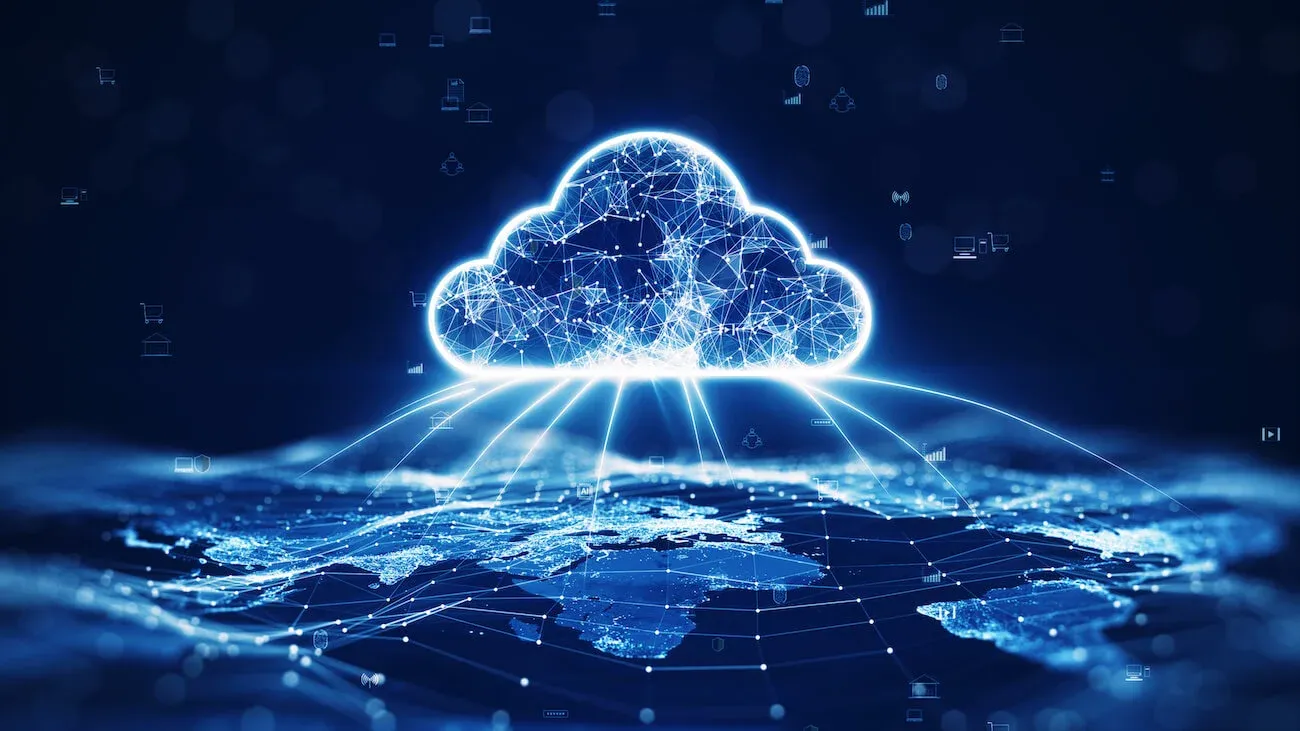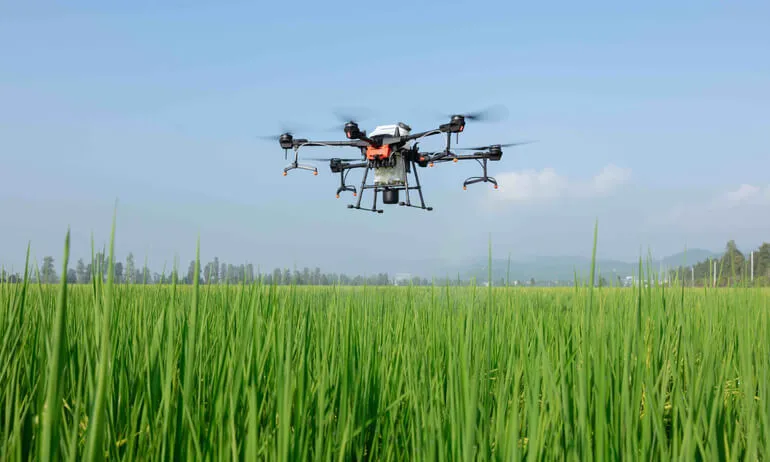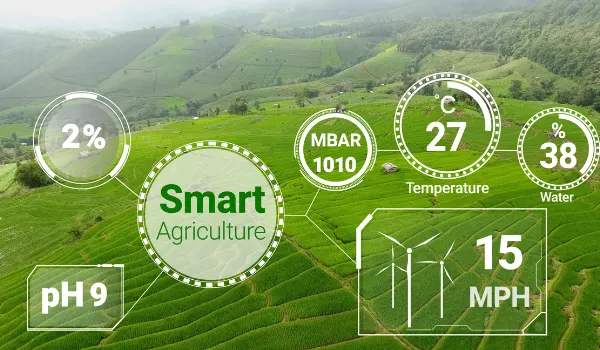I remember the first time someone explained cloud computing to me. I was sitting in a coffee shop, struggling with my laptop's limited storage, when my friend said, "Why don't you just put everything in the cloud?" I had no idea what that meant! Today, I use cloud services every single day, and I'm excited to share everything I've learned about this amazing technology. What is cloud computing with example might seem like a complex topic, but I promise it's much simpler than you think. By the end of this guide, you'll understand exactly how the cloud works and why it's become such an important part of our daily lives.
What is Cloud Computing and How Does it Work: The Basics
Let me start with the simplest explanation I can give you. Cloud computing is like having a magic computer that you can access from anywhere in the world. Instead of keeping all your files, programs, and data on your own computer, you store them on powerful computers owned by big companies like Google, Amazon, or Microsoft. Think of it like this: imagine you have a huge storage unit that you can access from your house, your office, or even while you're on vacation. That's essentially what cloud computing does for your digital stuff!
Here's how it works in simple terms:
- Your device (phone, laptop, tablet) connects to the internet
- You access services through websites or apps
- Your data lives on servers in data centers around the world
- You can get your information from any device, anywhere
I use cloud computing every day without even thinking about it. When I check my email on Gmail, upload photos to Google Photos, or watch Netflix, I'm using the cloud!
How Cloud Computing Actually Works Behind the Scenes
Now let me explain the technical side in a way that's easy to understand. I've visited several data centers, and they're absolutely fascinating places!
The Physical Infrastructure
Cloud computing relies on massive buildings filled with thousands of computers called servers. These aren't like the computer on your desk - they're much more powerful and designed to run 24/7. I've seen rooms the size of football fields packed with these machines, all humming quietly as they process millions of requests. The servers are connected through incredibly fast internet connections. When you save a document to Google Drive, it travels through fiber optic cables at the speed of light to reach these data centers.
How Your Data Travels
Here's what happens when you upload a photo to the cloud:
- Your phone sends the photo through your internet connection
- The photo travels through various networks and cables
- It arrives at a data center where it's stored on multiple servers
- The cloud service creates copies for backup and faster access
- When you want to see the photo later, it travels back to your device
This entire process usually takes just seconds, even though your photo might be stored thousands of miles away!
Different Types of Cloud Computing Services
Through my years of working with various cloud platforms, I've learned there are three main types of cloud services. Let me break them down for you:
Software as a Service (SaaS)
This is probably what you use most often. SaaS means you use software through your web browser instead of installing it on your computer. I use these services daily:
- Gmail for email
- Google Docs for writing
- Netflix for entertainment
- Spotify for music
- Zoom for video calls
The best part? You never have to worry about updates or maintenance. The company takes care of everything!
Platform as a Service (PaaS)
This is mainly for people who build websites and apps. Instead of setting up their own servers, developers can use cloud platforms to run their creations. I've helped several small businesses use PaaS to launch their websites quickly and affordably.
Infrastructure as a Service (IaaS)
This is like renting super-powerful computers in the cloud. Instead of buying expensive servers, companies can rent computing power as needed. It's like having a computer that can grow or shrink based on what you need!
What is Cloud Computing with Example: Real-World Applications
Let me share some examples of cloud computing that you probably use every day:
Personal Examples
- Photo Storage: When I take pictures on my phone, they automatically backup to Google Photos or iCloud
- Music Streaming: My Spotify playlists are stored in the cloud, so I can access them from any device
- Email: My Gmail account lets me read emails from my phone, laptop, or tablet
- Document Editing: I can start writing a document on my laptop and finish it on my phone using Google Docs
Business Examples
- Online Shopping: When you buy something on Amazon, their entire system runs on cloud computing
- Video Conferencing: Zoom meetings happen in the cloud, connecting people worldwide
- Banking Apps: Your mobile banking app securely connects to your bank's cloud systems
- Social Media: Facebook, Instagram, and Twitter all run on massive cloud infrastructures
Educational Examples
- Online Learning: Platforms like Khan Academy and Coursera deliver lessons through the cloud
- School Systems: Many schools use Google Classroom or similar cloud-based learning management systems
- Research: Scientists share data and collaborate on projects using cloud storage and computing
Top 10 Examples of Cloud Computing You Use Daily
Here are 10 examples of cloud computing that most people use without realizing it:
- Google Drive - Store and share files online
- Netflix - Stream movies and TV shows
- WhatsApp - Send messages and make calls
- Instagram - Share and view photos
- YouTube - Watch and upload videos
- Apple iCloud - Backup iPhone data
- Microsoft Office 365 - Use Word, Excel, PowerPoint online
- Dropbox - Sync files across devices
- Gmail - Send and receive emails
- Spotify - Listen to music anywhere
I use at least half of these services every single day, and they've made my life so much easier!
Advantages and Disadvantages of Cloud Computing
Let me share what I've learned about the advantages and disadvantages of cloud computing from my personal experience and research:
Major Advantages
Cost Savings: I remember when my friend's small business needed new servers. Instead of spending $50,000 upfront, they moved to the cloud and now pay about $200 per month. That's a huge difference!
Accessibility: I can access my files from anywhere with an internet connection. Whether I'm at home, in a coffee shop, or traveling, my data is always available.
Automatic Updates: My cloud apps update themselves. I never have to worry about downloading and installing new versions.
Scalability: During the holiday season, online stores can handle millions of extra customers by temporarily using more cloud resources.
Backup and Recovery: I've never lost important files since moving to the cloud. Everything is automatically backed up in multiple locations.
Collaboration: Working on shared documents with my team is seamless. We can all edit the same file at the same time!
Notable Disadvantages
Internet Dependency: When my internet goes down, I can't access my cloud files. This can be frustrating during important work.
Security Concerns: While cloud providers have excellent security, some people worry about storing sensitive data online.
Ongoing Costs: Monthly subscription fees can add up over time, especially for businesses using multiple cloud services.
Limited Control: You depend on the cloud provider's policies and service quality. If they have problems, you're affected too.
Privacy Questions: Some people are uncomfortable with companies having access to their personal data.
How Cloud Computing Benefits Different Users
For Students and Families
I've seen how cloud computing transforms education. Students can:
- Access homework from any device
- Collaborate on group projects easily
- Never lose important assignments
- Use expensive software without buying it
Families benefit by:
- Sharing photos automatically
- Backing up precious memories
- Accessing entertainment anywhere
- Reducing technology costs
For Small Businesses
Small businesses love cloud computing because it levels the playing field. I've helped several startups who couldn't afford expensive IT infrastructure. With the cloud, they can:
- Compete with larger companies
- Scale up or down as needed
- Access professional tools affordably
- Work remotely effectively
For Large Enterprises
Big companies use cloud computing to:
- Reduce IT costs dramatically
- Improve disaster recovery
- Enable global collaboration
- Innovate faster with new technologies
Security in Cloud Computing: What You Need to Know
Security is probably the biggest concern people have about cloud computing. Let me address this based on what I've learned from cybersecurity experts:
How Cloud Providers Protect Your Data
Physical Security: Data centers have multiple layers of security - armed guards, biometric scanners, and 24/7 monitoring. I've visited these facilities, and they're more secure than most banks!
Encryption: Your data is scrambled using complex codes that would take millions of years to crack without the proper key.
Regular Updates: Cloud providers constantly update their security systems to protect against new threats.
Compliance: Major cloud providers follow strict regulations and undergo regular security audits.
What You Can Do to Stay Safe
Use Strong Passwords: I always recommend using a password manager to create unique, strong passwords for all your accounts.
Enable Two-Factor Authentication: This adds an extra layer of security that I use on all my important accounts.
Be Careful with Public Wi-Fi: I never access sensitive cloud data on public networks without using a VPN.
Regular Monitoring: I check my account activity regularly to make sure everything looks normal.
The Future of Cloud Computing and How it Works
The future of cloud computing excites me! Here's what I see coming:
Edge Computing
This brings cloud services closer to where you are. Instead of your data traveling thousands of miles, it might only need to go a few miles to a local data center. This makes everything faster!
Artificial Intelligence Integration
AI is becoming a standard part of cloud services. I already use AI-powered features in Google Photos that can find specific pictures just by describing them.
Improved Security
Cloud security keeps getting better. New technologies like quantum encryption will make cloud data virtually impossible to hack.
More Specialized Services
Cloud providers are creating services for specific industries like healthcare, education, and manufacturing.
Making the Switch: How to Start Using Cloud Computing
If you're new to cloud computing, here's how I recommend getting started:
Start Small
Begin with free services like:
- Google Drive for file storage
- Gmail for email
- Google Photos for pictures
Gradually Expand
Once you're comfortable, try:
- Streaming services like Netflix or Spotify
- Online document editing with Google Docs
- Cloud-based photo editing tools
For Businesses
Start with:
- Cloud email systems
- Online file sharing
- Basic backup services
- Gradually move more complex systems
Common Myths About Cloud Computing Debunked
Let me clear up some misconceptions I often hear:
Myth: "The cloud isn't secure" Truth: Major cloud providers often have better security than most companies can afford on their own.
Myth: "Cloud computing is just for tech companies" Truth: Everyone from farmers to doctors to artists uses cloud computing daily.
Myth: "You need to be technical to use the cloud" Truth: Most cloud services are designed to be user-friendly. If you can use a smartphone, you can use the cloud!
Myth: "The cloud is just a marketing term" Truth: Cloud computing represents a fundamental shift in how we use technology.
Conclusion: Why Cloud Computing and How it Works Matters
Cloud computing has revolutionized how we live and work. From the moment I wake up and check my phone to when I stream a movie before bed, I'm using cloud services constantly. What is cloud computing and how does it work isn't just a technical question - it's about understanding a technology that's become essential to modern life. The cloud gives us incredible power: unlimited storage, access to expensive software, global collaboration, and automatic backups. Whether you're a student, parent, business owner, or just someone who wants to understand technology better, cloud computing offers benefits that can improve your daily life. The key is starting simple and gradually exploring what's possible.
I encourage you to try one new cloud service this week. Maybe backup your photos, create a document in Google Docs, or try a new streaming service. Once you experience the convenience and power of cloud computing, you'll wonder how you ever lived without it! The future is in the cloud, and now you understand exactly how it works and why it matters. Welcome to the cloud age - I'm excited to see how you'll use these amazing tools to enhance your life and work!













